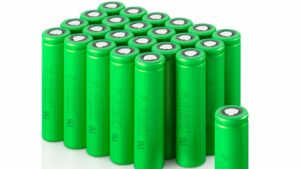Lavender oil has become very popular due to its multiple medicinal properties, as it helps regenerate the skin, relieve stress, reduce inflammation, and repel mosquitoes, among other uses. However, these are not its only functions, as it has become a key element in the manufacturing of sodium-sulfur batteries, helping them to be more powerful and store electricity from renewable sources.
These large batteries, composed of sulfur and linalool, the main component of lavender oil, aim to become an alternative for wind and photovoltaic electricity storage when not in use.
Sodium-sulfur batteries, in particular, offer more advantages and benefits than lithium batteries when it comes to storing energy. This is because the materials they are made of are much more accessible than lithium and cobalt, which are essential in lithium-ion batteries that have an environmentally damaging extraction process.
However, the disadvantages of this innovative battery lie in its functionalities, as they store less energy than those made with lithium, therefore, they are less durable. This is where lavender oil and its main component, linalool, come into play. According to experts at the Max Planck Institute of Colloids and Interfaces, this component could help extend the lifespan of these batteries.

Why does the sodium-sulfur battery have lower durability and storage capacity?
The institute’s team explained that the fact that these batteries have less storage capacity, caused by a significant decrease after a few discharge cycles, is a consequence of what is known as “sulfithling.” This occurs when the polysulfides, formed in the cathode, migrate to the anode and react with it, leading to battery failure.
As a result, experts had to find a solution to this situation. It was then when they discovered that the combination of linalool and sulfur results in a stable and dense nanomaterial, which helped extend the lifespan of the batteries and achieve a higher energy density compared to current sodium-sulfur batteries.

Sodium-sulfur battery: what are its characteristics
Sodium-sulfur batteries are molten salt batteries made with sodium (Na) and sulfur (S). They are rechargeable and used for energy storage. Among their characteristics are their high energy density, high charge and discharge efficiency, long lifespan, low-cost materials, as well as:
- Applications: they are used to store energy in the power grid, wind farms, and hydroelectric installations.
- Operation: These batteries use electrolytes, a solid sodium ion conductor (beta-alumina β″-Al2O3), and operate at temperatures between 300 and 350 °C.
- Advantages: The basic elements for their manufacturing are sodium, sulfur, and carbon, which are very common worldwide. According to experts, these elements facilitate their use in storing electricity from renewable energies.
- Disadvantages: Sodium polysulfide is highly corrosive.
Have you visited our YouTube channel yet? Subscribe now!

